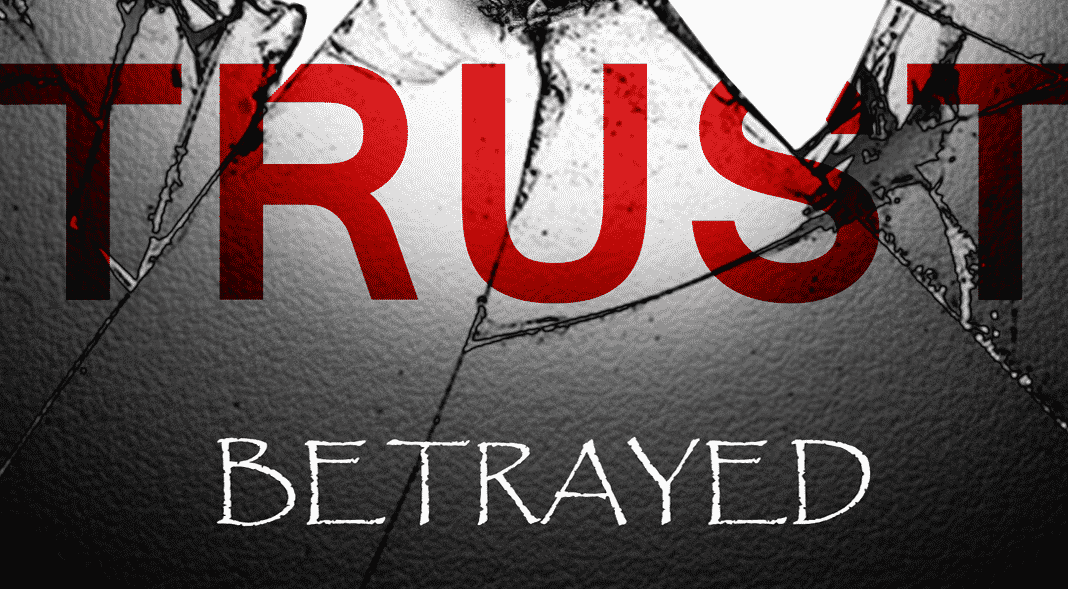Nora Roberts Sues Cristiane Serruya, Wins Injunction
A plagiarism story with no end in sight...

Back in February, we covered the Cristiane Serruya plagiarism scandal.
Serruya, now better known as #CopyPasteCris, was a romance author that was finding growing success in the Amazon system. However, fellow romance author Courtney Milan discovered widespread plagiarism in one of Serruya’s books and a widespread investigation kicked off.
That investigation, which largely took place over Twitter, involved other authors such as Tessa Dare, Golden Angel and, eventually, even reached the doorstep of industry icon Nora Roberts.
Roberts has published more than 200 books in a career that spans nearly four decades. However, when some of Roberts’ work appeared in Serruya’s books, many felt that this could be a turning point in the story.
Roberts is one of the few authors with the resources to even consider taking legal action, especially against a Brazillian resident like Serruya. Furthermore, she has a history of going after plagiarists in court. In 1997, she sued another popular romance author, Janet Dailey, who admitted to the plagiarism and settled out of court.
Last week, that turning point happened as Nora Roberts filed a lawsuit 6th Business Court of Rio de Janeiro. The lawsuit is seeking the maximum under Brazilian law, 3,000 times the hight sale price of any of the 6 Serruya books named in the lawsuit.
Though just a week old, the lawsuit has already seen its first success as Roberts has secured what amounts to an injunction that bars the physical or electronic sale of Serruya’s books involved in the lawsuit.
That injunction also blocks Serruya from receiving any royalties from those books, with any royalties owed needing to be placed in a judicial account.
It’s not the end of the lawsuit by any stretch, most estimations have it going on for years, but it is a significant victory and one that is widely celebrated by romance authors and fans alike, many of whom have become captivated by this story.
But it’s important to remember that this is just one case of plagiarism in a vast sea of it. It feels good, but there is work to be done not involving people named Serruya.
The Never Ending Battle Over Plagiarism

Serruya’s story has become a particular fascination for authors and readers alike. There are many reasons for this.
Though plagiarism and low quality work is a significant issue on Amazon’s self-publishing system, few exploiting the system have any delusions of being actual authors. Serruya clearly did (and maybe still does), having worked not just to publish a large number of books, but to establish a brand for herself.
It’s also because Serruya, when confronted with the plagiarism, initially tried to put the blame on ghostwriters she had hired from Fiverr. This explanation was often seen as being even worse than simply being a plagiarist as she wasn’t just hiring ghostwriters, but hiring them from a site whose primary selling point is low-cost work.
But while Serruya has become the faces of plagiarism on Amazon, Serruya is far from the only to exploit Amazon’s system in this way. As discussed in our follow-up pieces on the story, Amazon’s systems for stopping plagiarism are extraordinarily weak.
Not only is plagiarism not mentioned in its own documentation for Kindle Direct Publishing, there’s little evidence of users having their work blocked due to plagiarism or simply being low-quality work.
Amazon told the Associated Press that “We use a combination of teams of investigators and automated technology to prevent and catch the vast majority of bad actors who attempt to violate our policies before they publish.” However, in the past, Amazon, through its CreateSpace platform, has failed to even vet works for basic formatting and layout.
But even if Amazon does have such systems in place and uses them, they clearly aren’t working. As Roberts noted, it wasn’t Amazon that caught Serruya. The platform let her publish more than 30 heavily-plagiarized works that pulled heavily from books already in Amazon’s ebook database.
In a fair world, Serruya would have never published a single book and, sadly, it’s likely she not the only plagiarist with many such titles under their name.
Fixing the Problem
As I said previously, Amazon could fix this issue by baking in true plagiarism detection into their Kindle Direct Publishing process but haven’t, at least not the level that will catch people like Serruya.
My experience with plagiarists, however, is that there is never just one. If you catch one, you can be certain there are more. Unfortunately, Amazon has little motivation to address this. There’s little motivation to make the needed investment in people and technology, especially when they make money selling books by people like Serruya.
Amazon has created a system that rewards people for uploading low-quality and plagiarized work and doesn’t have a system in place to truly enforce its policies. In fact, as of January last year it was actively cutting staff from its self-publishing efforts.
But, while Serruya is getting her well-deserved comeuppance, that takes the focus off of Amazon. Amazon built the system Serruya exploited, Amazon profited from the system and Amazon is not doing anything to change it. Even if we accept Amazon’s “combination of teams of investigators” answer at face value, it clearly isn’t enough.
While I am happy that Serruya is being held accountable and I hope that Nora Roberts makes a statement that other would-be plagiarists will listen to, without changes at Amazon it’s only a matter of time until the next Serruya is discovered.
To be clear, this isn’t just a problem with Amazon and self-publishing. Traditional book publishers also have their issues with plagiarism and they can impact well-known authors such as Jonah Lehrer and Jane Goodall.
The problem is simple: Real plagiarism analyses take time and money. As someone who does these for a living, this isn’t something you can easily automate your way out of. Plagiarism detection tools can only spot similarities, humans have to determine if something is plagiarism.
But until plagiarism really hurts Amazon or other publishers, they aren’t going to invest the needed resources. There’s just no reason.
Bottom Line
Serruya clearly deserves whatever the court (or settlement) determines. At best she’s a plagiarist who leaned on low-cost ghostwriters she didn’t perform due diligence on. At worst, she’s a plagiarist who lifted lines and passages from a variety of authors and dozens of books on her own.
However, until publishers are held accountable, there will always be another Serruya.
And that’s the thing about plagiarism stories. When they break, we immediately turn all of our attention and focus to the plagiarist. While this is understandable, it ignores a simple question: What about those that enabled them, either knowingly or unknowingly?
Negligence against plagiarism may not be as big of a sin as plagiarism, but until we start calling out this sin, it’s safe to say there will be a lot more plagiarists on the horizons.
Simply put, the plagiarist is responsible for the plagiarism, but when plagiarism is published, we have to at least look at the hands it passed through on the way out the door.
Want to Reuse or Republish this Content?
If you want to feature this article in your site, classroom or elsewhere, just let us know! We usually grant permission within 24 hours.
